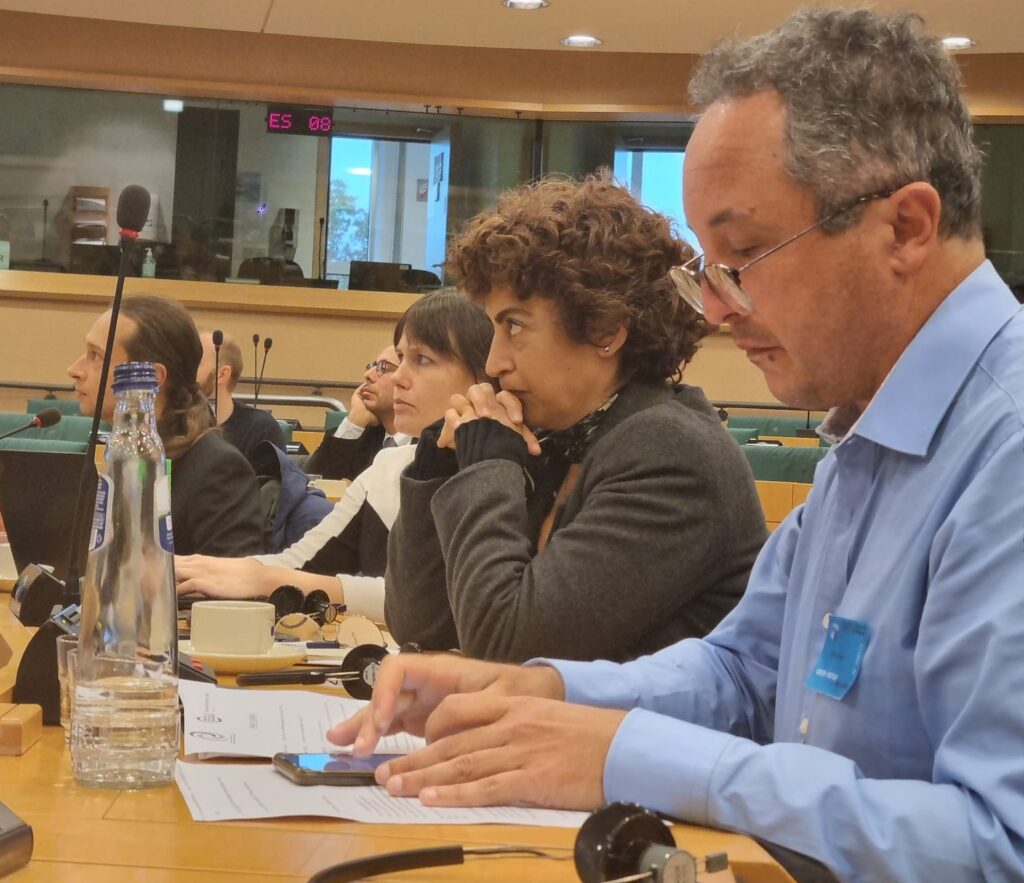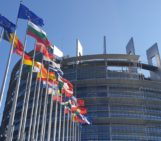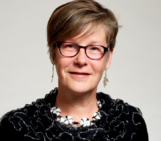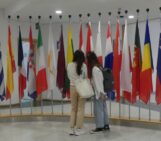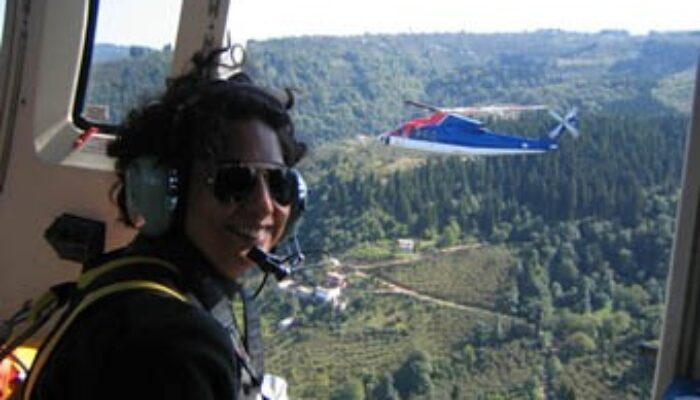
Bikem – Welcome to GeoTalk! Can you tell us a bit about your research on climate change and its impact on terrestrial ecosystems?
Thank you for having me. My current research focuses on forests and the impact of changes in climatic drivers on these ecosystems in terms of species composition, range shifts, and so on. I’m also curious about the impact that changes in the frequency and severity of disturbances, such as wildfires, may have on ecosystem health, species succession, and how these may feed back into the regional climate.
To answer some of these questions, I use a process based dynamic vegetation model along with various high-resolution soil and climate datasets, and consider different scenarios/probabilities in my simulations. My current study area is the Anatolian Peninsula, as it is a diverse and heterogeneous region with an unmistakable human footprint, and also a large and mostly untapped open air laboratory.
Not only are researcher – but you’re also an author, a photojournalist and documentary producer who has worked in conflict and areas of environmental catastrophes, a podcaster, and someone how has experience talking to people across all sectors of societies. Can you tell us a bit about your career and what led you to academia?
Mainly curiosity, and a desire to make a lasting and positive impact. The way I see it, there’s not much difference in the approach both professions use to reach an answer. The journalist and the scientist both do extensive research and analysis. They both need accurate data, they both need to verify both their data and their results, which they then report.
Journalism, for me, was a way to see what in fact was happening on the ground with my own eyes. I received both my bachelor’s and master’s degrees at Boston University and was trained by some of the best in their field. In the field I worked with empirical evidence so to speak, and I wanted to relay the information I uncovered as accurately as possible to the general public – in hopes it wouldn’t be lost in translation and could help to change certain things, in a positive and sustainable way.
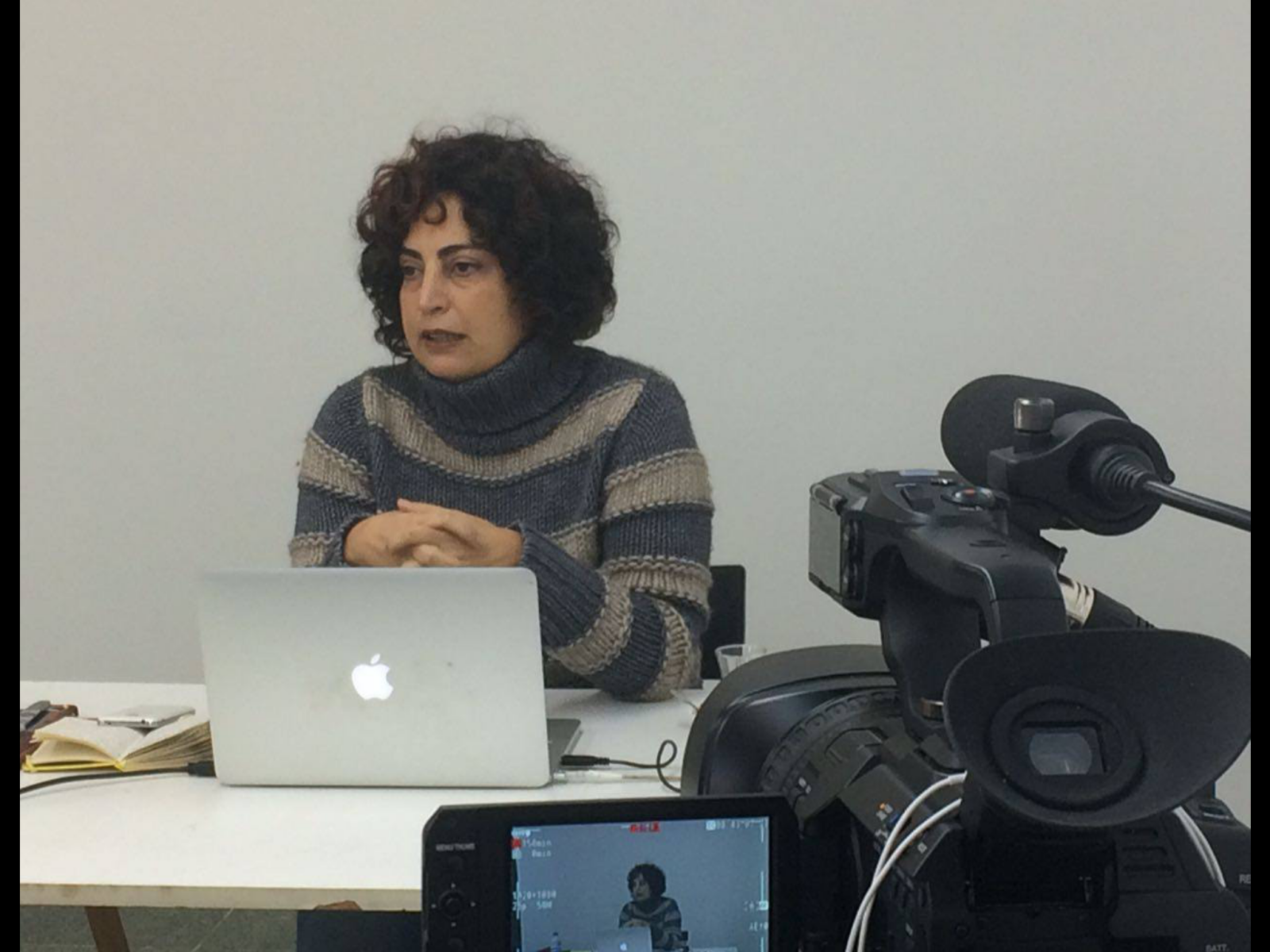 One of the reasons why I became a photo journalist and a documentary producer was to be on the front lines, not behind a desk – so that I could make sense of it all, and tell the stories as they were. My preferred technique was to tell the news story with the testimony of the main eye witnesses, with minimal to no interference. However, in time I realized that what we were doing, reporting, was becoming a consumable rather than an agent of change. The visuals we recorded in the field seemed to raise the threshold to atrocities, and numb sensitivities. When I decided I no longer wanted to keep on doing the same thing expecting different results each time, I decided to end that madness.
One of the reasons why I became a photo journalist and a documentary producer was to be on the front lines, not behind a desk – so that I could make sense of it all, and tell the stories as they were. My preferred technique was to tell the news story with the testimony of the main eye witnesses, with minimal to no interference. However, in time I realized that what we were doing, reporting, was becoming a consumable rather than an agent of change. The visuals we recorded in the field seemed to raise the threshold to atrocities, and numb sensitivities. When I decided I no longer wanted to keep on doing the same thing expecting different results each time, I decided to end that madness.
Academia has never been too far from my work. My friends who were scientists, whom I also consulted on various occasions, were always urging me to join them in their projects. And I said, “how about we do all that, but more, how about I finally do that PhD?” So I took the leap and decided to take my curiosity to the next level. I buried myself in books once again, refined my research skills and tried to quench my thirst for new knowledge and methods.
Working in different geographies, cultures, and ecosystems made me aware of the multiple variables that may go into an equation. I was aware of how climate change and biodiversity loss was affecting societies and the nature of war. I had worked with various stakeholders and was attune to their needs and could assess where their interests lied. For my PhD, I picked a questions to answer where my curiosity intersected with them.
Analysing climate, land-climate interactions, dynamic triggers, uncertainty shrouding the process of migration was actually not at all different for me than working in a conflict zone and documenting the different dynamics that may trigger forced migration of populations.
Often, when we talk about human migration, we either refer to geography or numbers. However, migration is a dynamic process where a whole lot of factors may come into play, such as hostile territory, refugia, the permanent desire to return when conditions become amicable, competition for resources either subside or become manageable, etc.
I understood the dynamics behind human migration, how it may unfold, and where it may end. All I had to do was to show this process in numbers, for species who couldn’t testify for themselves, and whose needs and limitations on several occasions I had to learn from scratch.And as I continue to learn, I am once again astonished by their resilience, as often I was astonished by the resilience of the human populations that were forced to migrate. This has made me realise that the survival instinct which can pass on from generation to generation is the biggest constant there is.
What motivated you to join the EGU’s Biodiversity Task Force?
Two things in fact. The first reason is straightforward: Biodiversity is my soft spot. I have seen ecosystems quickly degrade when they lose the diversity of their inhabitants. They quickly become stale and fragile, and when the dynamic interaction between different species is lost, the system often suffers from the consequences. This has lead me to focus on the dynamism in diverse ecosystems, and how that may change or preserve the ecosystem’s integrity, health, and functioning.
My experience has led me to believe that true change, both sustainable and permanent, can only be realised through the joint and sincere effort of all stakeholders, including and especially policymakers, scientists, and the general public.
Also, being new to the whole wide world of academia after such a long break, I was looking for my niche, a unique way to contribute that could use my expertise, and let me experience a new perspective. And I thought the Taskforce could be the right place for that.
I believe this is the very strength of our group as a whole: Diversity, and an open mind with sincere interest to experience new things from another’s perspective towards a common purpose. However, that said, the harmony we managed to strike up within our group was not only our doing. We had a very good guide. Thanks to you Chloe, encouraging us, finding out our strengths and giving us assignments which utilized them allowed us to not only enjoy our time together, but made us feel like a team. It was also rewarding at another level. Because we all used different approaches, methodologies, together we could tackle complex tasks.
What would your advice be for other researchers who would like to engage with the policymaking processes?
Be open-minded and very patient. The policymaking process can be slow at best and frustrating at worst. But do not give up. Always try to think outside the box and be persistent with the policymakers when trying to provide them with scientific evidence. Policymaking can be very bureaucratic, and not always transparent. However if you stick to the evidence, and let them know that is where your priority is, then eventually you will be heard.
I believe this patience, open-mindedness, and flexibility helped the Task Force in achieving policy impact. We picked a goal, to have a Nature Restoration Law that is supported by the best available scientific evidence be adopted. And I feel we succeeded to a degree. It gave me hope to see policymakers bend over backwards to ensure the law considered the science, despite the misinformation that was spread before it passed. It felt even better to be able to support them.
Within the Taskforce, when we were not sure how to proceed, we always reminded ourselves and to each other that, when in doubt, we would put science first.
What’s your next move?
I’m interested in ecosystem degradation and how disturbances affect and change ecosystems, how they bounce back, what they evolve into and why, and should the disturbance cycle be altered, what would happen. I’m also interested in working on data scarce regions, some of them places in which I worked as a journalist. So basically change, unpredictability, system response and shifts are areas of research which I’m curious about and enjoy working in. In the short term I plan on continuing to work on wildfires and the different responses that different forest types will give under a changing climate. In the medium and long term, I would like to play around with theory as well.

